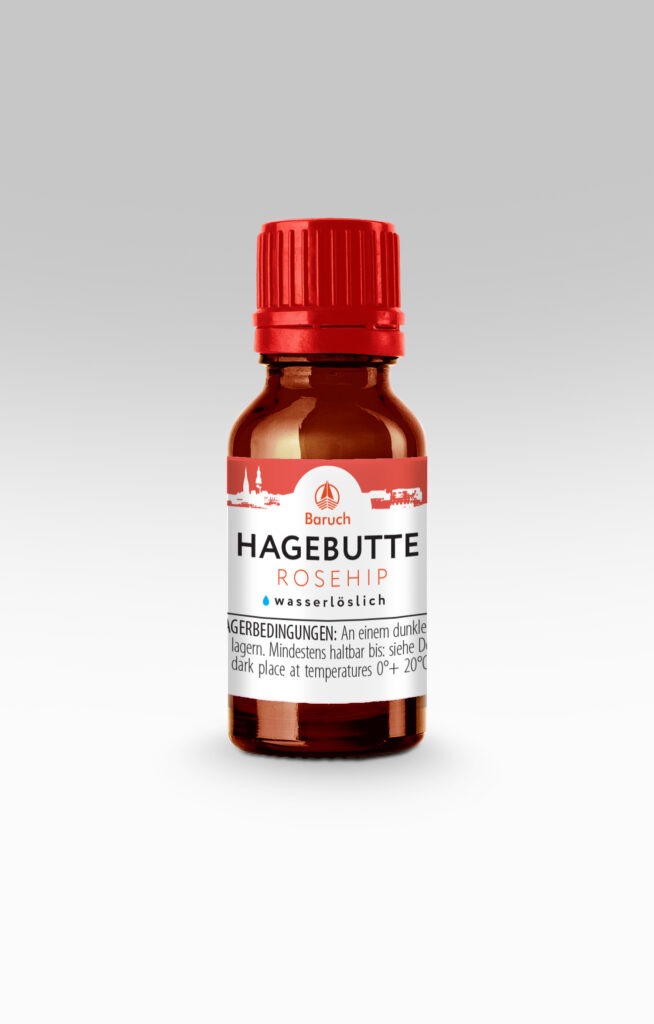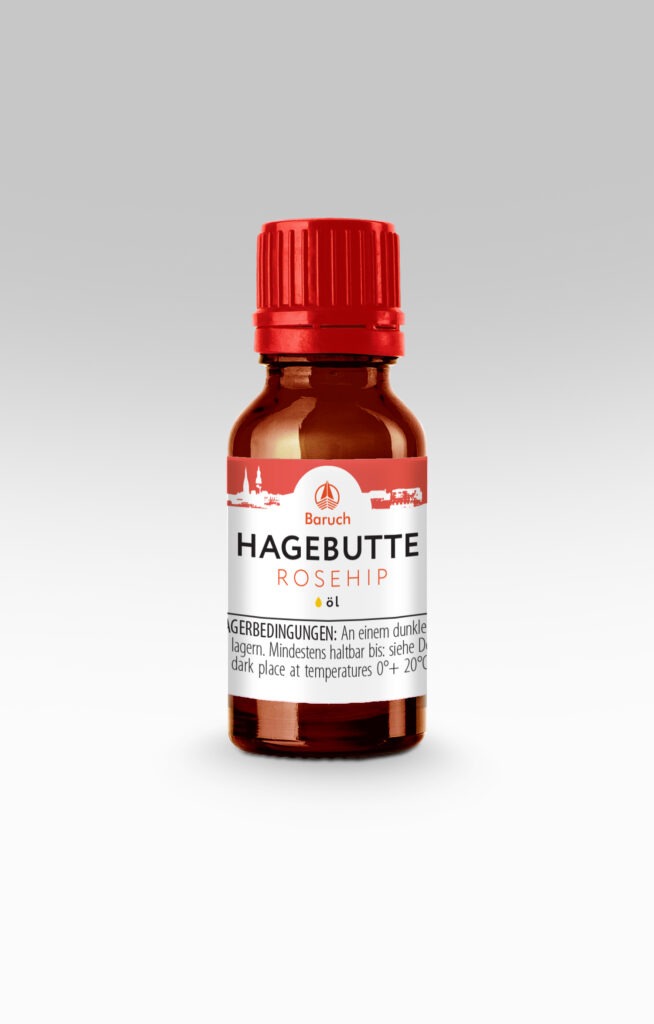Rose hips, the fruits of which are used to obtain oil and CO2 extract, are also called wild rose, and sometimes the not very melodious, dog rose. Rose hip is the progenitor of all cultivated roses.
CO2 extract from rose hips, like rose hip oil, is recommended in medicine for high blood pressure, colds and sore throats. Oral ingestion of CO2 extract is great for treating dermatitis. Rosehip oil is useful as a choleretic agent in diseases of the gallbladder and liver. It is effective in diseases of the kidneys, lungs, anemia, tuberculosis, respiratory diseases of the mucous membranes and treatment of burns.
Rose hip CO2 extract likely isn’t used much in cooking. This is due to the fact that rosehip oil has a specific acidic taste and is not recommended for diseases of the gastrointestinal tract, although the CO2 extract does not contain any acid and does not show any negative consequences.
The most commonly used rose hip CO2 extract, same as rose hip oil, can be used in cosmetics. Rose hip CO2 extract is a oily liquid of red-orange color with a characteristic oily odor and bitter oily taste.
In the course of gas chromatographic-mass spectrometric investigations, several hundred compounds were analyzed in the composition, of which more than 60 were identified.


Chart 1. Main ingredients of rose hip CO2 extract
| NAME | CONTENT IN% OF THE AMOUNT OF VOLATILE COMPONENTS | EFFECT |
|---|---|---|
| Aldehydes | 6,1 | They are actively used in perfumery. |
| Fatty acid esters | 11 | No information available. |
| Tocopherol (Vitamin E) | 2,8 | Antioxidant activity. |
| Beta-Carotine (Provitamin A) | 6 | Antioxidant. Reduces the risk of heart disease. Protects the skin from burns and UV radiation. Indispensable ingredient for eye health. |
| Quercetin | 3 | Antioxidant Activity. |
| Terpene compounds | 5 | The main property is an antimicrobial, antiviral and anti-inflammatory effect. |
| α- and β-linolenic acid | 14 | Unsaturated. An essential fatty acid from the class of omega-3 fatty acids. It has a membrane protecting, angioprotective effect. Immunomodulatory, improves brain metabolism. |
| Linoleic acid | 35 | An essential unsaturated fatty acid of the omega-6 class. It has anti-inflammatory, vasoconstrictor, and aggregating effects. If there is no balance between omega-3 and omega-6 fatty acids, competitive processes can arise that influence the metabolism. |
| Palmitic acid | 11 | Unsaturated fatty acid for water repellency in cosmetics. |
For cosmetics based on rose hip CO2 extract, the following products are recommended:
- Preparations for treating irritation and peeling skin;
- Anti-aging ingredients, especially for dry skin.
- nourishing skin creams;
- Cream for the care of the skin around the eyes, eyelids, skin on the décolleté;
- in agents for combating streaks with a good regenerating effect;
- Care products for dry split hair
Avoid using rose hip CO2 extract on oily skin, which is particularly prone to acne.
Chart 2. Application rates, recommendations for the use and storage of rose hip CO2 extract
| Food usage rates | Item А100: 0.003% (30g per ton) Water-soluble microemulsions EMA1: 0.3% (3l per 1000l or 3ml per liter) |
| Application rates in cosmetics | Item А10: 1-3% Item А100: 0.1-0.3% |
| Recommendations for use | It is recommended to add CO2 extracts in the final stages of preparation, in the cooling phase of the end product. |
| Storage advice | It is recommended to store CO2 extracts in a closed container in a cool room and avoid direct sunlight.Wild rose grows everywhere in the temperate zones of Eurasia. There is a wide variety of rose hip species. Wild rose grows everywhere in the temperate zones of Eurasia. There is a wide variety of rose hip species. |
Historical reference
In Russia, rose hips were valued more than gold – they were traded for satin, velvet, and sable fur. They kept the fruit in the Kremlin, and the Pharmaceutical Ordinance of 1620 stated that none of the doctors could obtain rose hip fruit without the special permission of the Tsar. To get them in the 16.-17. In the 18th century, special expeditions were sent to the Orenburg steppe under the protection of soldiers. The Slavs firmly believed that rose hip leaves scattered around the house soothed a person and protected them from domestic troubles. Rose hips were strung on a string and worn like pearls to attract love. It was said that rose hip tea drunk before bedtime caused prophetic dreams.
